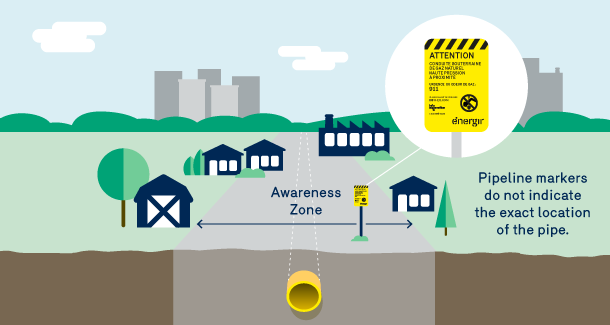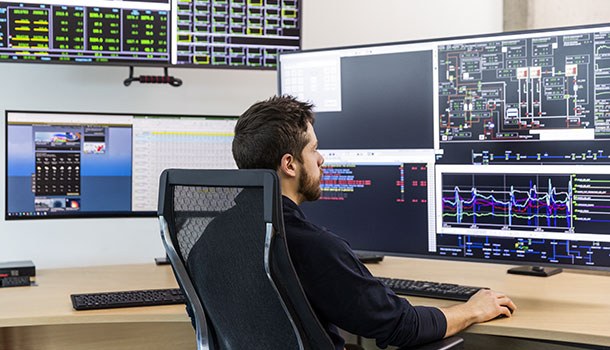A high-pressure natural gas line nearby
You live or work near a high-pressure natural gas line?
If it is the case, it is important for you to not only be aware of its existence but to also know how to act in case of an emergency.
What is a high pressure natural gas line?
To reach Québec, the natural gas is carried over long distances by a transmission network. The steel pipes of this type of network are the largest ones, and the natural gas travels through them at high pressure (up to 30 times the pressure of a car tire).
The location of gas lines is indicated by visible markers which provide emergency information. Pipeline markers do not indicate the exact location of the pipe.


Your safety, our priority
Énergir gives priority to the security of the natural gas network. A preventive maintenance program ensures its integrity. In fact, several control points are located along the entire network, which enables the real-time reading of data on the temperature of the natural gas, its pressure and flow. This important information enables us to manage the system meticulously and ensure its effective and safe operation. This is how the Énergir Control Centre practices continuous surveillance, 24/7, 365 days a year.
If you suspect there is non-compliant activity happening near a pipeline, please contact us at 1 888 452-1837.
How do you recognize a leak?
Some signs help you recognize a potential break in the natural gas network:
- The smell of rotten eggs in some cases;
- Dead or discoloured vegetation in grassed areas;
- A noticeable release of dust from an opening in the ground;
- A low whistle;
- Continuous bubbling in humid or flooded areas;
- The presence of a flame (if there is a leak and a source of ignition).
What do you do if there is a leak?
- Call 911;
- Evacuate the area and try to prevent anyone from having access;
- Avoid flames and sparks;
- If there is a fire, do not try to put it out.
Do you need more information?
If a high-pressure natural gas line crosses your property, refer to the specific requirements that apply to you before undertaking any work in our easements.